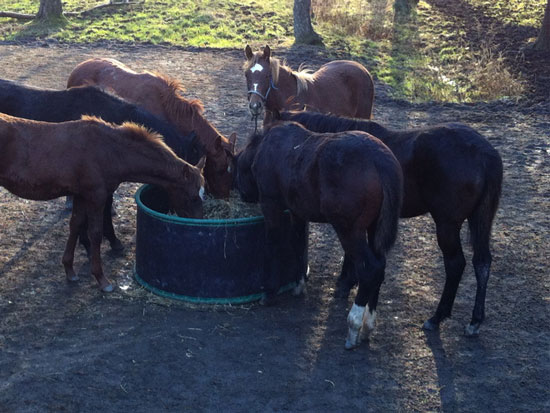Mars 2013 -Vitamin E – the antioxidant vitamin
The monthly information letter from PC-Horse focus on vitamin E. Sources of the vitamin in horse feeds is addressed, and storage losses of natural vitamin E in roughages and grains, and vitamin E requirements are explained. The article is written by Dr. Dag Austbø at the Norwegian University of Life Sciences.
Drs. Dag Austbø and Knut Hove are two of the key people behind the development of PC-Horse. Their scientific work and international networks contribute to the biological basis and computational models which are used in PC-Horse.

Vitamin E is added to most concentrate feeds and to general purpose mineral and vitamin supplements. There are also special vitamin E supplements available on the market, often with the mineral selenium added.
The amounts of vitamin E in a feed are expressed in International Units (IU) or milligrams per kg. One (1) IU of the naturally occurring vitamin is equivalent to 1 milligram. In PC-Horse, we specify requirements in milligrams. There are various chemical forms of vitamin E. Natural vitamin E often has higher biological activity than synthesized vitamin E, which may be composed of several different chemical forms.
Common roughages contain from 30 to 100 IU of vitamin E per kg of dry feed (DM). Fresh grass and early harvested hay or haylage have the highest levels of the vitamin. During storage, the content of vitamin E decreases gradually. Through the winter season 50-70% of the original content may be lost.
Grains such as oats, barley, wheat and maize contain less vitamin E than good quality roughage. Typical levels will be in the range of 20 to 30 IU per kg, and decrease with storage. As a consequence, a horse's vitamin E status will change over the year due to these storage losses if extra vitamin E is not added to the diet through concentrates or supplements.
Vitamin E is a fat-soluble vitamin, and will be found in the fat-rich parts of the body. At the cellular level this means that vitamin E is found in the cell membrane, where it works as an antioxidant protecting the cell against harmful oxidation. Vitamin E works as an antioxidant in close cooperation with the mineral Selenium, which is found in the interior of the cell.
The net requirement for vitamin E is set to 1.0 IU per kg body weight for adult horses at maintenance and for pregnant mares. For horses in training the requirement is 1.6 to 2.0 IU per kg body weight depending on how hard the horse is trained. In mares with foals and young horses a net requirement of 2.0 IU per kg body weight is proposed. In PC-Horse we recommend about 20% more than this net demand, in order to build in a safety margin when preparing rations for all types of horses.
Vitamin E is of low toxicity and it is not dangerous to give 5-10 times more than the recommended amount, but intake of vitamin E at these levels is both unnecessary and costly. Compared to the low toxicity of vitamin E, it is important to remember that selenium is highly toxic if overfed in comparable quantities.
Vitamin E deficiency has been associated with various diseases of the muscular system, such as white muscle disease in young foals and rhabdomyolysis in adult horses. It has also been connected with reduced fertility in stallions, but this is not well documented. Part of the difficulty in detecting the exact causes of diseases associated with vitamin E deficiency relates to the interactions between selenium and vitamin E mentioned above. It is therefore important to check the status of both vitamin E and selenium when formulating horse rations. Special note should be taken when using roughages that have been stored throughout the winter before being fed.

















